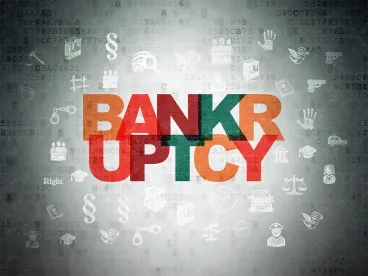Dealing with a financially distressed customer? Considering how to avoid a fraudulent transfer a claw-back in the customer were to seek bankruptcy protection? Some creditors have attempted to shield themselves from such actions by conducting the transfers through a financial institution. Well, not so fast.
In the case of FTI Consulting, Inc. v. Merit Mgmt. Group, LP, 830 F.3d 690 (7th Cir. 2016), the Seventh Circuit recently determined the “safe harbor” defense of Section 546(e) of the Bankruptcy Code does not protect transfers from fraudulent transfer liability when the financial institution is used as a “mere conduit” or pass-through entity for the transfer.
The Supreme Court of the United States granted certiorari to hear arguments on the case, and expressed concern over the potential breadth of the safe harbor defense if the Court were to overrule the Seventh Circuit’s decision. Presumably, overruling the Seventh Circuit risks formation of a slippery slope on which creditors begin structuring transfers from debtors to flow through financial institutions solely for the purpose of circumventing claw-backs if the debtor were to seek bankruptcy protection. Such a result could subvert the legislative intent behind enacting Section 546(e).
Section 546(e) prohibits a trustee (or debtor in possession) from avoiding a transfer “made by or to (or for the benefit of) a . . . financial institution.” Reading the plain meaning of this section – as the petitioner argued before the Supreme Court – one would conclude that as long as the transfer was “made” to the financial institution, then the trustee would be precluded from avoiding it. But the Seventh Circuit disagreed with such a plain reading. Instead, the Seventh Circuit concluded Section 546(e) is ambiguous and requires further scrutiny into legislative history. The Seventh Circuit opined:
Congress later expanded the safe harbor to other types of actors in the securities industry, including financial institutions. . . . Nothing it did, however, indicated that the safe harbor applied to those institutions in their capacity as intermediaries. The safe harbor has ample work to do when an entity involved in the commodities trade is a debtor or actual recipient of a transfer, rather than simply a conduit for funds.
Our interpretation is consistent with this understanding of the law. . . . [T]he safe harbor’s purpose is to “protect [] the market from systemic risk and allow[] parties in the securities industry to enter into transaction with greater confidence” – to prevent “one large bankruptcy from rippling through the securities industry.”
Merit Mgmt. Group, supra, 830 F.3d at 696 (quoting Grede v. FCStone, LLC, 746 F.3d 244, 252 (7th Cir. 2014)).
Notably, there is a significant circuit split on this issue; which is, perhaps, the reason the Supreme Court granted certiorari. The Seventh Circuit noted the circuit split, in which the Second, Third, Sixth, Eighth, and Tenth Circuits have all adopted the opposite position. Id. at 697; see, e.g., In re Rue21, Inc., 575 B.R. 314, 328 (Bankr. W.D. Pa. 2017) (citing In re Resorts Int’l, Inc., 181 F.3d 505, 517 (3d Cir. 1999)) (“Under binding Third Circuit precedent, however, the section 546(e) safe harbor defense is not vitiated simply because the financial institution serves as a conduit for the transfer.”).[1]
For example, in Rue21, the transfer involved a leveraged buy-out of the debtor, rue21. Since a financial institution handled the transfers of stock and money – i.e. the financial institution served as a conduit to the transaction – the Bankruptcy Court for the Western District of Pennsylvania determined that this was sufficient to invoke the safe harbor protection to a fraudulent transfer action. Id.
[1] The Rue21 court did, however, note the circuit split, and the Supreme Court’s granting of certiorari to hear and decide the issue in Merit Mgmt. Group.




 />i
/>i
